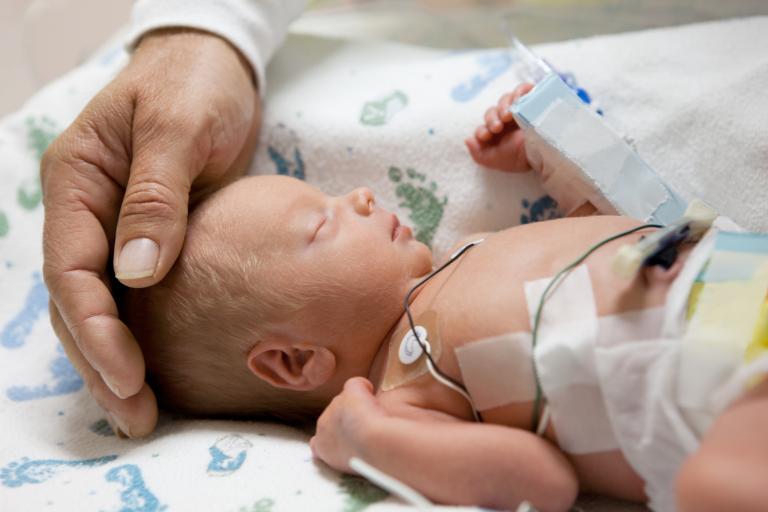
An unstable body temperature can be the first indication that there is a problem with the newborn's health. The most significant heat loss occurs immediately after birth, largely due to the amniotic fluid evaporating from the skin. Heat loss also occurs when the baby is placed on a cooler surface, such as a scale. Without proper measures to mitigate heat loss, a newborn's temperature could drop by 2 to 4 degrees C within the first 20 minutes.1
Temperature Management for preterm babies
Temperature management is essential for the health and survival of any newborn, and matters even more for preterm infants, especially as advances in medicine have kept earlier gestational-aged babies alive. Very low birth weight infants born less than 1500 grams require additional attention to maintaining a targeted body temperature to avoid both hypothermia and hyperthermia. Various factors that contribute to this, include an infant's smaller size, larger surface-area-to-body-mass ratio, thin skin, immature body systems, and lower proportion of subcutaneous fat.
Body Temperature - a critical vital sign
Too often, healthcare teams overlook temperature as a critical indicator of stability. Clinicians caring for newborns, particularity those premature or sick, must integrate the latest technology to maximize thermal stability for these vulnerable infants, starting in the delivery room and on through to hospital discharge.
Resources:
- Koop LK, & Tadi P. Physiology, heat loss. [Updated 2023 Jul 17]. StatPearls. 2023 Jan. https://www.ncbi.nlm.nih.gov/books/NBK541107/
JB26838XX

Dr. Karen Starr Becker, PhD, BC-NNP
GE HealthCare Clinical Development Director, Maternal Infant Care







